
| Estonia |  |
General data Area: 45,000 km²
Population: 1.35 millions
Density: 30 inhab/km²
Capital: Tallinn
Languages: Estonian, Russian
Origins: Estonians (70%), Russians (25%)
Religions: in a very large majority Protestants (Lutherans).
The important Russian minority is Orthodox.
GDP per capita: USD 9,100
Reproduction rate: 1.4
Life expectansy: 72 years
Currency: Estonian Crown | 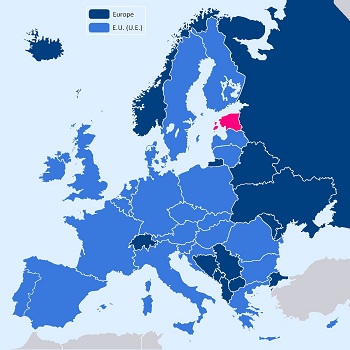 |
Very long time pagans, Estes see the “Crusaders” landing in the 12th century. The Danish founded Tallinn (the “city of the Danes") in 1219; the German Carry-Sword knights occupy the South. After the Lutheran sermon in Tallinn, in 1524, the war of Livonia tears apart the area. At the time of the later division, Estonia is given Sweden in 1561. This ensures the Lutheran domination on the country. The Estonian language remains in force, even if the culture becomes deeply German. The defeat of the Swedish King Charles the 12th before Peter the Great in Poltava, in 1709, leads to the annexation of Estonia by Russia. Initially neutral for the people, the change is brutal at the end of the 19th century - intensive Russianization, both on cultural and religious levels. Following the defeat of Russia, Estonia will obtain the international recognition of its independence in 1921 after a great many events. The Molotov-Ribbentrop Pact allots the country to Stalin. In 1940, Estonia is annexed by the USSR. But on summer 1941, Germany occupies Estonia until February 1944. Become again Soviet, the republic is bound to the same terrible repression as its neighbors.
Having however profited from important investments in its infrastructure, the country proclaims its independence on August 20, 1991, independence recognized by the USSR on September 6.
Candidate to the admission in the EEC, Estonia integrates the EU on May 1, 2004. These people are the fewest of the area, and more today with a very important Russian speaker minority. The question of the attribution of nationality excluding the people arrived in the country after 1940 (and thus almost all Russians) created very sharp tensions.
In 2007, the decision to move from the center of Tallinn a statue commemorating the liberation of Estonia by the Red Army involved an important political crisis with its Russian neighbor. Linguistic affinity with Finland is very important. In this sense, the assimilation of this country to the “Baltic” term is completely abusive. The Estonian language belongs to the Scandinavian group of the Finno-Ugric language.
Estonia and the Euro Like the ten new members of 2004, Estonia committed itself adopting the Euro.
The country was faithful to this engagement by adhering as of on June 28, 2004 to the mechanism of convergence (ERM II). The parity is as follows: 1 € = 15,6466 Estonian Crowns.
Its economic results of 2005 are not satisfactory on all the criteria (inflation in particular).
Estonia has a very detailed plan of passage, whose revision includes the postponement of the introduction, logically decided. Like the other Baltic States, inflation (an obsession of the ECB) could make it possible to consider 2012 or 2013 for the introduction. The selected option of introduction is that which succeeded very well in Germany, this means an introduction of the Euro simultaneously to the withdrawal of the national currency. The choice of the national sides was carried out by contest.
Ten projects were subjected to the civic vote, some of them really original. It seems that the voices dispersed on these projects, and that a very relative majority (27%) decided for the adopted project of Lembit Lõhmus: 8 identical coins representing the map of Estonia.
The name EESTI appears below the map.
You can consult the contest’s rules , the various projects and the results of the contest .
Lastly, Finland was right now retained to strike the Estonian coins. | Official national sides |  | 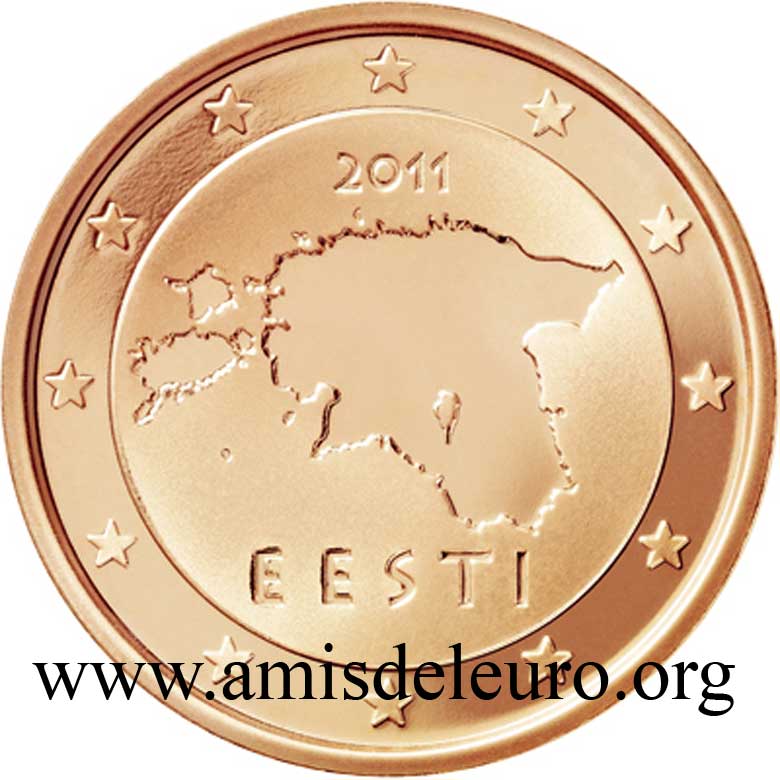 | 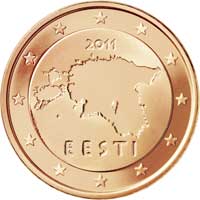 |  | | 1 cent | 2 cent | 5 cent | 10 cent | 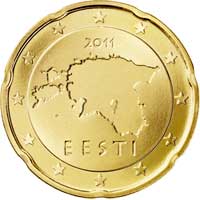 | 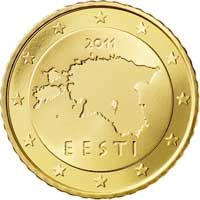 |  | 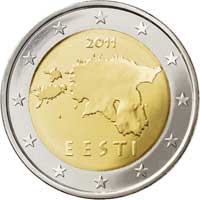 | | 20 cent | 50 cent | 1 euro | 2 euro |
The working document of the European Commission of the 04/11/2005 plans for Estonia: - 150 to 200 million coins, that is to say between 30 and 60 million euros
- the number of banknotes is not yet known Contact E-mail: pays@amisdeleuro.org Links
- The web site of the Central Bank of Estonia: http://www.eestipank.info
Top of page |
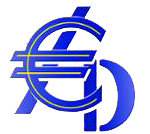 AD€ - Les Amis de l'Euro
AD€ - Les Amis de l'Euro








